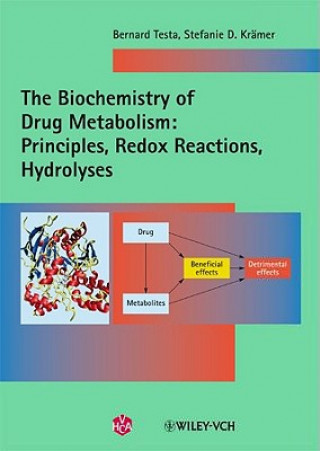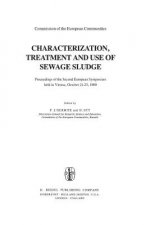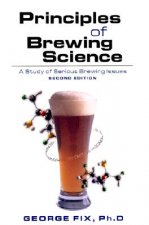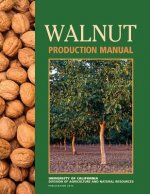
Code: 05045411
Biochemistry of Drug Metabolism - Two Volume Set
by Bernard Testa, Stefanie D. Kramer
Offering a conceptual and factual presentation of the metabolism of drugs and other xenobiotics, these two volumes distinctly focus on the biochemistry, with an emphasis on xenobiotic-metabolizing enzymes, their reactions and regu ... more
- Language:
 English
English - Binding: Paperback
- Number of pages: 950
Publisher: Helvitica Chimica Acta Verlag,Switzerland, 2010
- More about this

You might also like
-

Alexander and Alestria
69.76 zł -4 % -

Chicago's Nelson Algren
56.65 zł -23 % -

Adventures into Mexico
697.90 zł -

Children's Literature and Learner Empowerment
292.28 zł -

Decision Theory - An Introduction to Dynamic Programming & Sequential Decisions
636.40 zł -

Characterization, Treatment and Use of Sewage Sludge
1130.24 zł -

Clausewitz's Timeless Trinity
902.88 zł
Availability alert
Enter your e-mail address and once book will be available,
we will send you a message. It's that simple.
More about Biochemistry of Drug Metabolism - Two Volume Set
 Book synopsis
Book synopsis
Offering a conceptual and factual presentation of the metabolism of drugs and other xenobiotics, these two volumes distinctly focus on the biochemistry, with an emphasis on xenobiotic-metabolizing enzymes, their reactions and regulations. The first volume is divided into three parts. Part One begins by introducing xenobiotics in the broad context of physiological metabolism, and continues with an overview of the processes of drug disposition and metabolism. It then goes on to summarize the macroscopic and microscopic locations of drug metabolism in animals and humans. This is followed by an introduction to the all-important issue of the consequences of drug and xenobiotic metabolism, providing an initial overview of pharmacokinetic, pharmacological and toxicological consequences. The last chapter examines drug metabolism in the context of drug research, with a focus on medicinal chemistry. The second part is a major component of the book, corresponding to the role of oxidoreductases as major agents of metabolism. Cytochromes P450 receive particular attention, namely their multiplicity, structure, catalytic mechanisms, and the various reactions they catalyze, while other oxidoreductases are also presented, such as flavin monooxygenases, monoamine oxidases and other amine oxidases, aldehyde oxidase and xanthine dehydrogenase, peroxidases, and dehydrogenases-reductases. Each drug-metabolizing enzyme or enzyme family begins with an Enzyme Identity Card summarizing its nomenclature and biochemical essentials. Part Three begins with a survey of the classification, properties and catalytic mechanism of the innumerable hydrolases known or suspected to play a role in xenobiotic metabolism. The focus then shifts to a systematic presentation of the various substrates classes, namely carboxylic esters, amides and peptides, lactams and lactones, esters of inorganic acids, alkene and arene epoxides, and some miscellaneous hydrolyzable moieties. Volume Two contains the last four parts of this work. Part 4 is devoted to the huge field of conjugation reactions, with much information being given on transferases. As in the two preceding parts, each drug-metabolizing enzyme or enzyme family begins with an Enzyme Identity Card summarizing its nomenclature and biochemical essentials. The reactions examined here include methylation, sulfation, glucuronidation, acetylation, conjugation with glutathione, while there is also a rigorous presentation of the pivotal role of xenobiotic-coenzyme A conjugates as a crossroads to various metabolic reactions. The next part examines the consequences of drug and xenobiotic metabolism in a pharmacological and toxicological perspective, with due attention paid to full activation, as is found with prodrugs, and to the worrying case of xenobiotic toxification. Parts 6 and 7 cover the inter-individual and intra-individual factors that influence drug metabolism, starting with an introduction to evolutionary events leading to species differences in the metabolism of xenobiotics and to polymorphisms within a particular species. Focusing on humans, the most relevant polymorphic drug-metabolizing enzymes are discussed, concentrating on ethnic differences and on the consequences for the pharmacokinetic behavior of affected drugs, while also introducing sex-dependent metabolic reactions. The final part introduces the mechanisms leading to increases or decreases in enzyme activities as the concept of enzyme induction via nuclear receptors and the different mechanisms of enzyme inhibition are explained. With these basics in mind, various influencing factors are discussed, including physiological and pathological conditions, as well as drugs, nutrients and environmental agents with a special focus on drug-drug interactions. With a foreword by Prof Leslie Z. Benet, the renowned biopharmaceutical scientist.
 Book details
Book details
Book category Books in English Technology, engineering, agriculture Industrial chemistry & manufacturing technologies Industrial chemistry
- Full title: Biochemistry of Drug Metabolism - Two Volume Set
- Author: Bernard Testa, Stefanie D. Kramer
- Language:
 English
English - Binding: Paperback
- Number of pages: 950
- EAN: 9783906390550
- ISBN: 3906390551
- ID: 05045411
- Publisher: Helvitica Chimica Acta Verlag,Switzerland
- Weight: 2324 g
- Dimensions: 248 × 168 × 49 mm
- Date of publishing: 14. April 2010
Trending among others
-

Understanding Wine Technology
136.91 zł -23 % -

Art of Beef Cutting - A Meat Professional's Guide to Butchering and Merchandising
193.77 zł -10 % -

French Patisserie
241.57 zł -7 % -

Art of Making Fermented Sausages
85.69 zł -5 % -

Malt
70.47 zł -23 % -

Mouthfeel
283.01 zł -

Salami
555.33 zł -

Principles of Brewing Science
123.90 zł -6 % -

Organic Chemistry of Drug Design and Drug Action
441.20 zł -6 % -

Pharmaceutical Competitive Intelligence for the Regulatory Affairs Professional
339.67 zł -

Craft Maltsters' Handbook
144.67 zł -

Designing Plastic Parts for Assembly
671.48 zł -

Introduction to Chemical Engineering - Tools for day and Tomorrow, 5th Edition
391.09 zł -

How To Brew
104.14 zł -7 % -

Designing Great Beers
88.82 zł -23 % -

Soapmaker's Companion
88.62 zł -11 % -

Introduction to Perfumery
420.63 zł -

Future Foods
106.86 zł -33 % -

Camra's Home-Brewing Problem Solver
65.93 zł -17 % -

Chromatopia
88.62 zł -23 % -

Craft and Science of Coffee
529.22 zł -9 % -

Food Processing Technology
610.28 zł -

Food Safety - The Science of Keeping Food Safe 2e
396.33 zł -

Altbier
65.12 zł -6 % -

Undiscovered Self
108.78 zł -

Note-by-Note Cooking
121.79 zł -4 % -

Formulation and Preparation of Cosmetics, Fragrances and Flavors
354.99 zł -

New Brewing Lager Beer
84.68 zł -7 % -

Microbiome, Immunity, Digestive Health and Nutrition
829.58 zł -

Wine Chemistry and Biochemistry
1538.27 zł -

Coulson and Richardson's Chemical Engineering
557.25 zł -

Food Microbiology
971.13 zł -

Voigt's Pharmaceutical Technology
661.30 zł -

Manufacturing: Process Techniques for the Cosmetic Industry
1033.14 zł -

Oktoberfest, Vienna, Marzen
53.43 zł -6 % -

Cosmetic Creams - Development, Manufacture and Marketing of Effective Skin Care Products
709.09 zł -

Belgian Ale
42.94 zł -23 % -

Pigment Processing
935.41 zł -

Continental Pilsener
53.43 zł -6 % -

Amber Revolution
161.81 zł -

Natural Soap Book
62.40 zł -10 % -

Cosmeceuticals and Cosmetic Ingredients
1180.24 zł -

Injection Mold Design Engineering
645.17 zł -

Colour
38.10 zł -23 % -

Brewing
169.58 zł -

Walnut Production Manual
321.82 zł -

Emperor Of Scent
52.02 zł -23 % -

Chemical Formulary, Volume 1
224.93 zł -45 % -

Pigment Compendium
1108.26 zł
safisfied customers
Since 2008, we have served long line of book lovers, but each of them was always on the first place.
Copyright! ©2008-24 libristo.pl All rights reservedPrivacyPoučení o cookies



 21 million books
21 million books Delivery 12.99 zł
Delivery 12.99 zł (32) 444 93 66 (8-15.30h)
(32) 444 93 66 (8-15.30h)